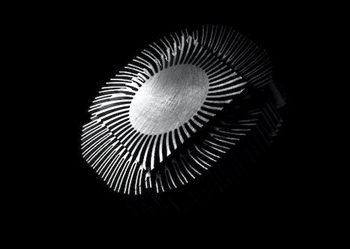Zeon Zoysia is durable grass that thrives in a wide range of situations. Zoysia Grass grows into a lush, thick, silky coat of green for your feet and toes. Zoysia grasses are used for household lawns, commercial plantings, and golf courses. Even though Zeon Zoysia is a tough grass that tolerates shade and drought well, it performs best when properly cared for. Although it is a physically tough process, installing a zoysia lawn as sod is the quickest way to get a lush and green lawn. If you’re seeking care suggestions for your Zeon zoysia, you’ve come to the right spot; in this blog, we will tell you how to maintain Zeon Zoysia.
Mowing a Zeon Zoysia Lawn
Maintain a height of.75″ to 1.5″ for your Zoysia lawn. Wider blade varieties can be kept a little higher. You must mow the grass regularly enough to ensure that no more than 1/3 of the grass blade is gone in a single cut. Mower blades should always be sharp, and clippings should always be caught and removed. A rotary or reel mower can be used to cut this grass. A dull blade rips the grass blade rather than producing a clean cut. It gives the tips a brown appearance, but it also allows infections to enter. While a sharp blade is vital for all grass varieties, the turf density of Zoysia and its sensitivity to Zoysia patch fungus make this especially critical.
Watering Zeon Zoysia Sod
When it comes out of dormancy (when it’s green and growing), Zoysia grass only needs about an inch of water each week. Zoysia may demand up to 2 inches of water each week in extremely hot conditions. Zoysia grass may fall dormant during periods of acute drought. Consider dormancy to be a form of hibernation. Many people believe their grass has perished. The Zoysia grass will restart growing when adequate rainfall or water returns, assuming this occurs during the warmer months.
Fertilization
The nitrogen requirement of Zoysia grass is considerable. That’s why, throughout the year, your lawn needs enough high-quality nitrogen and other fertilizers. However, you should use caution. When applied incorrectly, nitrogen-rich fertilizers can cause your grass to “burn” or “streak.” Fertilization is crucial, but so is the application time. Do not fertilize dormant Zoysia with a lot of nitrogen fertilizer.
Furthermore, nitrogen should never be applied too late in the growing season, certain diseases may be more likely as a result of this. If you’re unsure when to fertilize your Zoysia lawn, call a company like Atlanta Sod Farms for help.
Sunlight
One of the most critical factors in growing a healthy Zoysia lawn is exposure to sunlight. The grass Zoysia is warm-season grass. As a result, it requires a lot of sunshine. Most types require at least 7 hours of direct sunshine every day. Some kinds can survive a little less direct sunshine, but they won’t grow as densely.
Weed Control for Zeon Zoysia Sod
The thick growth of Zeon Zoysia can help to avoid weed invasion, however, the greatest weed management is prevention:
In the spring and fall, apply a pre-emergent herbicide labeled for use on Zoysia lawns.
Apply pre-emergent and post-emergent weed control chemicals designed particularly for Zoysia lawns. While Zoysia is a lush grass that crowds out certain weeds, the fact is that Zoysia lawns require pesticides to avoid weed infestations.
Zeon Zoysia Patch Fungus
The Zeon Zoysia Patch Fungus does not destroy the grass. It does, however, produce big, unattractive patches that will continue to spread throughout the growing season. Although not dead, these patches will take some time to heal. Three fungicide applications per year are recommended for Zoysia lawns.
Centipede Sod
Centipede is a low-maintenance grass with a medium-green hue and a medium texture. Because of its aggressive nature, centipede sod has become a highly popular lawn grass. Centipede grass is more shade tolerant than Tifway 419 Bermuda grass but less tolerant than St. Augustine and Zoysia lawn grass. Centipede grass may be ideal for your Atlanta house if you want aggressive, low-maintenance, shade-tolerant grass.
Conclusion
In this blog post, we have discussed the steps that can be followed to maintain Zeon Zoysia. So, if you have or want to install zeon zoysia in your lawn, you need to keep in mind the steps mentioned above for maintenance. However, zeon zoysia is a hardy grass that tolerates shade and performs well when properly maintained.
On the other hand, the centipede is a low-maintenance grass. It requires a small amount of fertilizer; if you give it too much, it will cause damage. This grass is famous because it can adapt to any environmental condition. It requires less maintenance and grows well in solid, acid, and sandy soil.
Read more: Emerald Zoysia – Maintenance Scheduel
Frequently Asked Questions
How do you thicken zoysia grass?
- Properly manage your soil
- Fertilize regularly
- Water as needed
- Ensure that you mow your lawn regularly
- Properly aerate the soil
- Carry out Weed Prevention and Control
- Ensure Disease Prevention and Treatment
What can I Overseed Zeon Zoysia with?
Ryegrass, which comes in annual and perennial varieties and thrives swiftly, is a popular choice for overseeding zoysia grass lawns. However, it competes with the established lawn for water and nutrients and can cause greater damage.
When Should I Aerate Zeon Zoysia?
Early summer is the optimum time to aerate zoysia grass since the grass grows quickly. Aerating twice a year on severely compacted soils is not out of the question. After aerating, apply fertilizer and water to help the turf recover quickly.
















